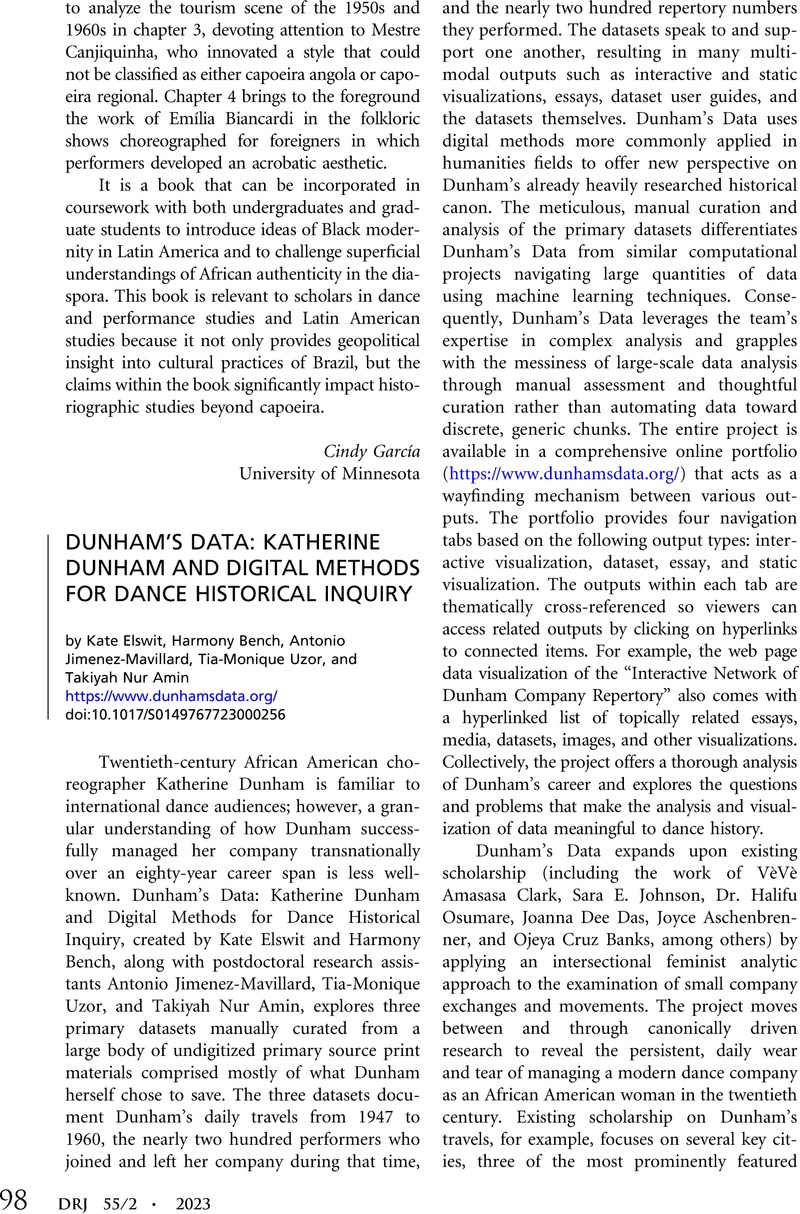Bench, Harmony,
Elswit, Kate, and
Jimenez-Mavillard, Antonio.
2022. “Connectivity vs. Canonicity: Data Science and Dance Studies in Historical Dialogue.” Extended abstract for paper presented at Graphs and Networks in the Humanities 2022, online, February 4, 2022.
Google Scholar 